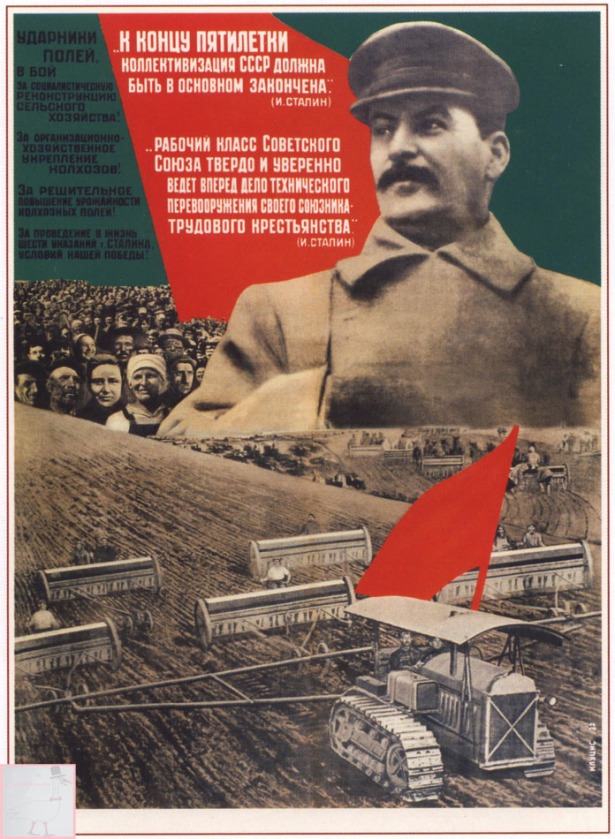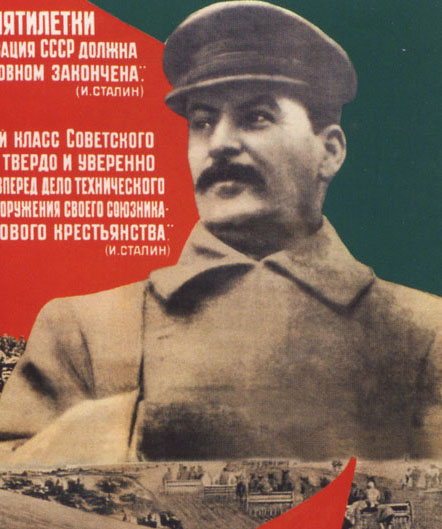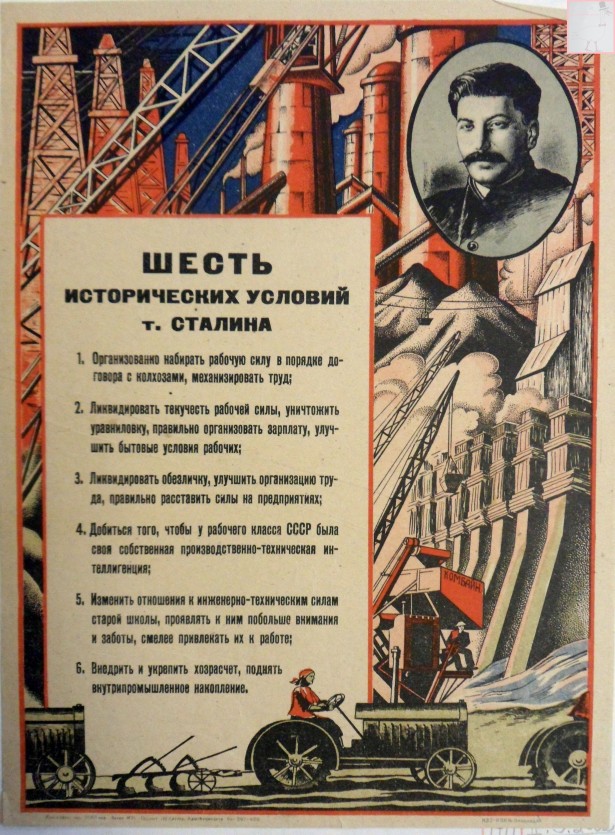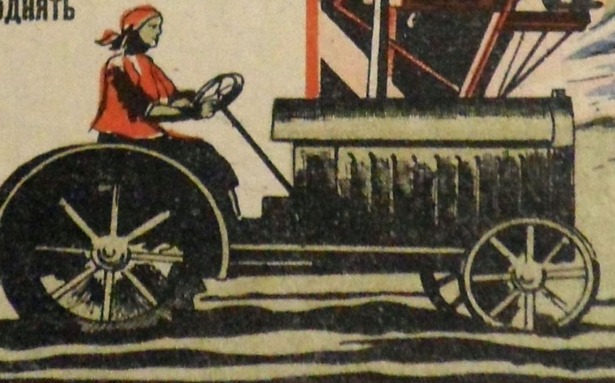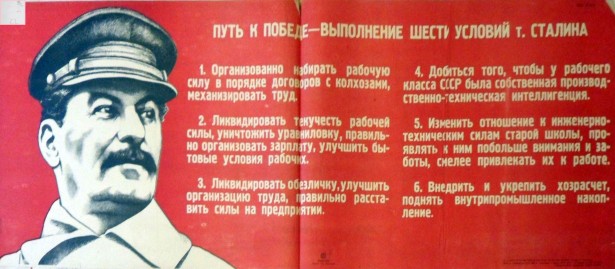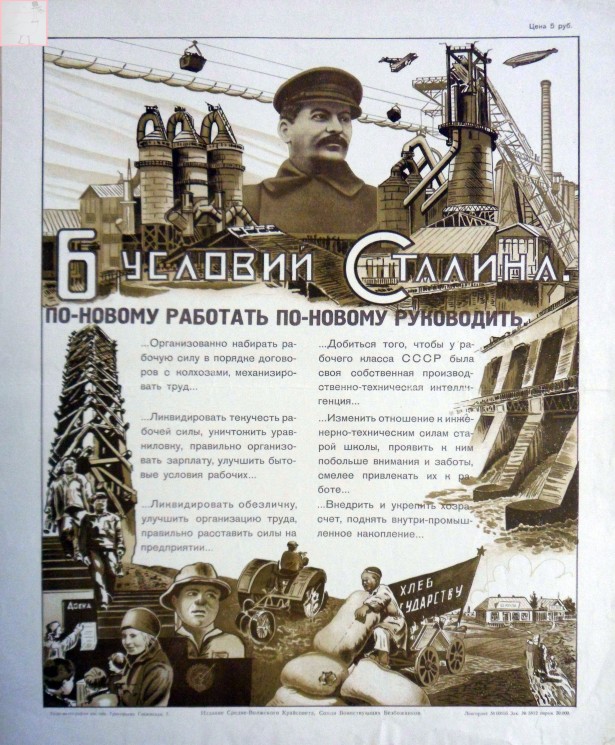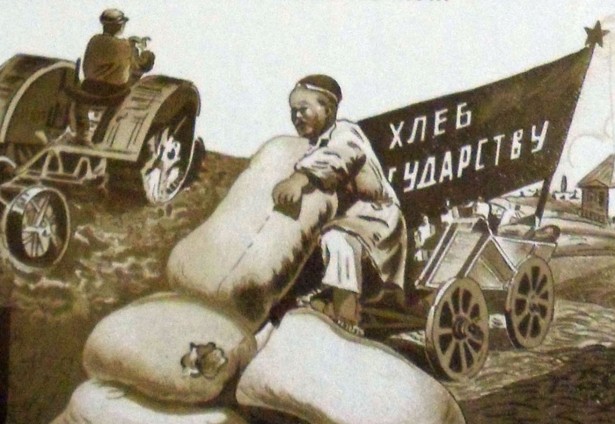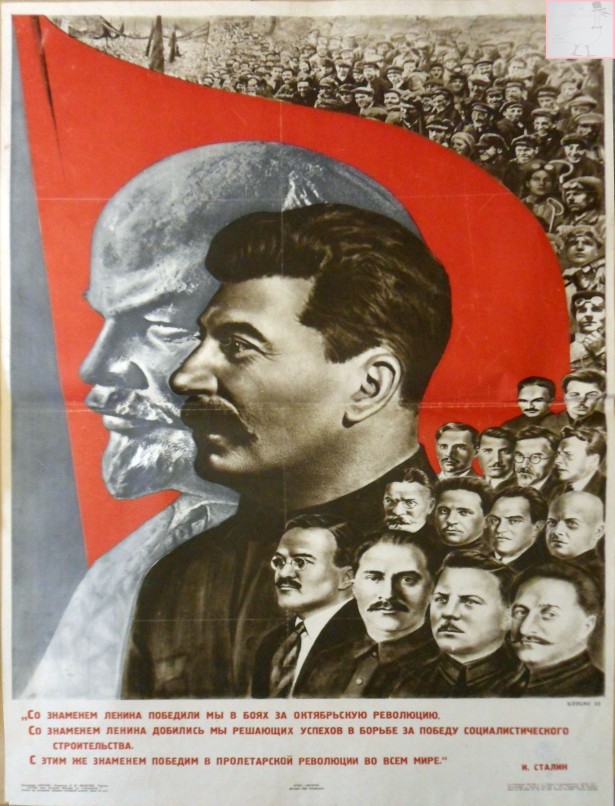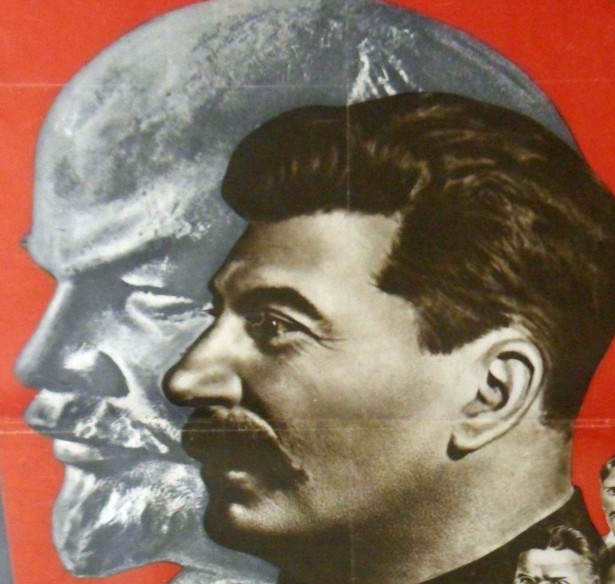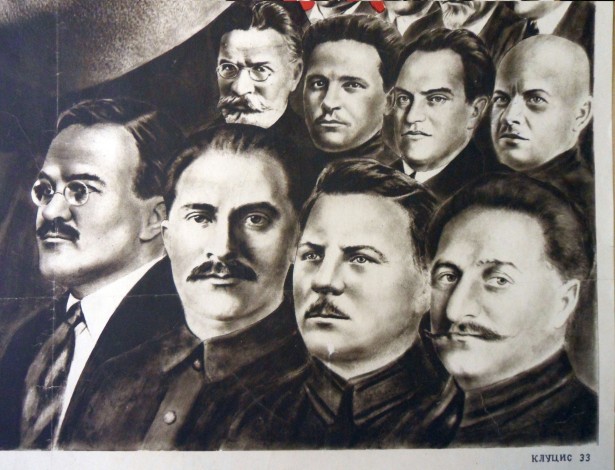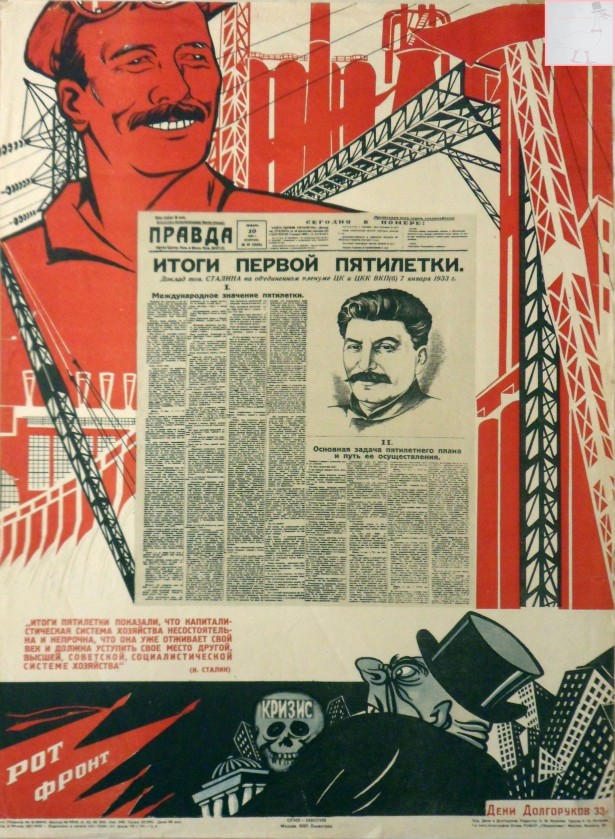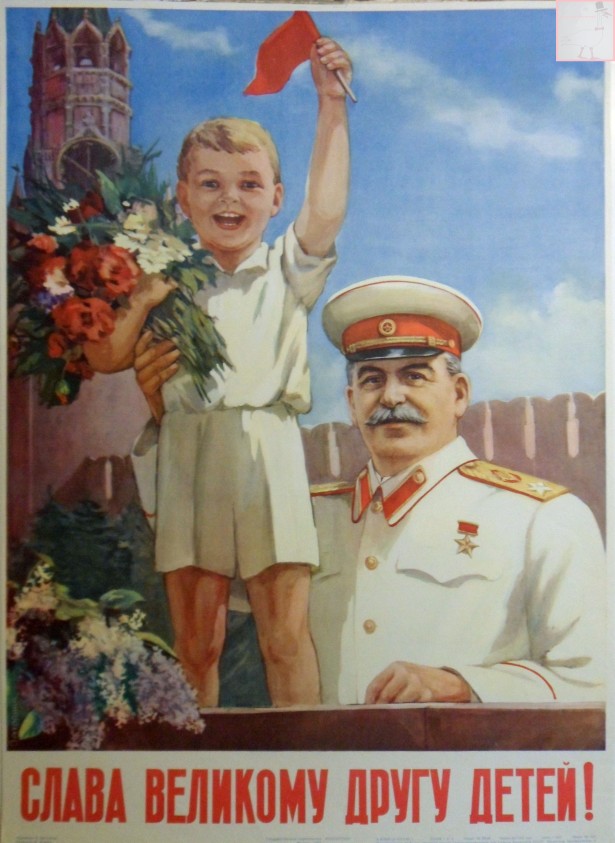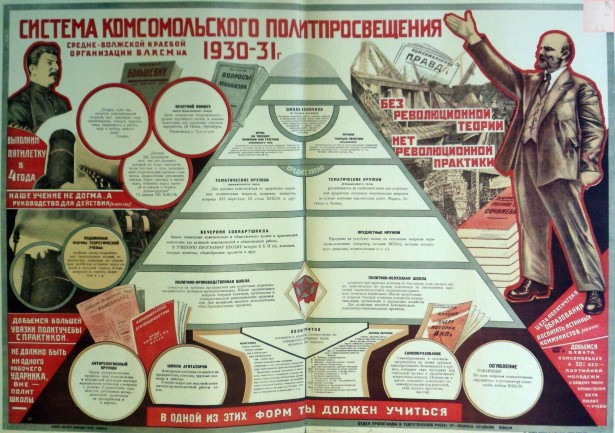
Unknown artist, Komsomol political education system mid-Volga organisation VLKSM for 1930-31 (Система комсомольского политпросвещения средне-волжской организации В.Л.К.С.М на. 1930-31 г.), 1931
Stalin poster of the week is a weekly excursion into the fascinating world of propaganda posters of Iosif Stalin, leader of the USSR from 1929 until his death in 1953.
Here, Anita Pisch will showcase some of the most interesting Stalin posters, based on extensive research in the archives of the Russian State Library, and analyse what makes these images such successful propaganda.
Anita’s fully illustrated book, The personality cult of Stalin in Soviet posters, 1929 -1953, published by ANU Press, is available for free download here, and can also be purchased in hard copy from ANU Press.
Stalin gained control of the Politburo at the Fifteenth Party Congress on 18 December 1927 demonstrating that not only had he been a close companion and confidant of Lenin, but that he had always supported Lenin’s political positions and was a devoted adherent to his dogma.
In his interview with the German author Emil Ludwig, Stalin stated modestly:
“As for myself, I am just a pupil of Lenin’s, and the aim of my life is to be a worthy pupil of his.”*
The first appearances of Stalin with Lenin in a poster occur in the year 1930. This poster by an unknown artist was published in Samara** by the Propaganda Department and Theoretical Studies Regional Committee of Middle-Volga Komsomol.

Although smaller than the full-length portrait of Lenin, Stalin also sports a sacral red aura
The poster promotes the value of political education. Lenin and Stalin appear outlined in a sacral red Bolshevik aura on either side of the poster, although as a full-length figure, Lenin is larger and therefore more prominent than the smaller bust of Stalin.
Both Lenin and Stalin are quoted, along with Engels, and their authoritative texts are depicted around the page. Circles containing text may reference the underground ‘circles in which Stalin and the other Old Bolsheviks cut their ideological teeth as they fomented revolution.

Lenin is presented in a characteristic rhetorical pose in suit and tie
These circles, which Stalin joined while he was still in the seminary in Tiflis, circulated illegal literature of a political and ideological nature. They were places of lively and often heated discussion and morphed into the secret cells that actively sought to undermine the tsarist regime.
The larger text on the posters is in the form of recognisable catchy slogans:
Achieve the five-year plan in four years.
Without revolutionary theory there is no revolutionary practice.
You must learn in one of these forms.
Our teaching is not a dogma, but a guide to action / F. Engels.
The purpose of political education is to educate true Communists / Leninists
This poster is typical of posters of the very early 1930s in which a great deal of text is reproduced and there is an assumption that people will spend a lot of time examining the poster.
Later posters capitalised on the strength of the medium by presenting shorter and punchier captions with arresting images, able to be taken in quickly as people bustled about their daily activities.
* J. V. Stalin, ‘Talk With the German Author Emil Ludwig’, December 13, 1931, Transl. by Hari Kumar, J.V. Stalin, Works, 13, (Moscow, Foreign Languages Publishing House, 1955), pp. 106-25, http://www.marxists.org/reference/archive/stalin/works/1931/dec/13.htm.
** From 1935 to 1991 Samara became known as Kuibyshev.
Anita Pisch‘s book, The personality cult of Stalin in Soviet posters, 1929 – 1953, is now available for free download through ANU Press open access, or to purchase in hard copy for $83. This lavishly illustrated book, featuring reproductions of over 130 posters, examines the way in which Stalin’s image in posters, symbolising the Bolshevik Party, the USSR state, and Bolshevik values and ideology, was used to create legitimacy for the Bolshevik government, to mobilise the population to make great sacrifices in order to industrialise and collectivise rapidly, and later to win the war, and to foster the development of a new type of Soviet person in a new utopian world.
Visit Anita Pisch’s website at www.anitapisch.com

